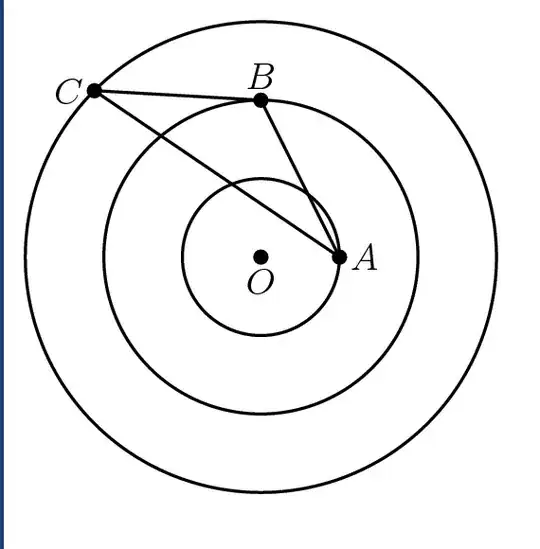Assume uniform distribution for the point on each circle. We can fix one of the points because area is rotationally invariant. Fix the inner most point to be $(1,0)$.
Denote $x$ and $y$ the phase angles of the points on the circles with radii $2$ and $3$ respectively. Using a formula for the area of a triangle given the cartesian coordinates of its vertices we get that the expected area is
$$\frac{1}{8\pi^2}\int_0^{2\pi}\int_0^{2\pi}\left|2\sin\left(x\right)-3\sin\left(y\right)+6\cos\left(x\right)\sin\left(y\right)-6\cos\left(y\right)\sin\left(x\right)\right|dxdy$$
$$\approx 2.0829$$
UPDATE:
The formula for the area of triangle $(A, B, C)$ is
$$\frac{|A_x(B_y-C_y) + B_x(C_y-A_y) + C_x(A_y-B_y)|}{2}$$
We have $A=(1,0)$, $B=2(\cos(x), \sin(x))$ and $C=3(\cos(y), \sin(y))$.
A factor of $\frac{1}{2\pi}$ comes from the uniform distribution for both $x$ and $y$. (We also assume independency.) Just place the values for the point coordinates in and the formula follows. (Notice, how the values $A_x=1$ and $A_y=0$ simplify the formula.)
For the maximum area, Wolfram Alpha gives $4.90482$ at $x=2.3882$ and $y=4.2046$. I don't know if exact forms can be found.
